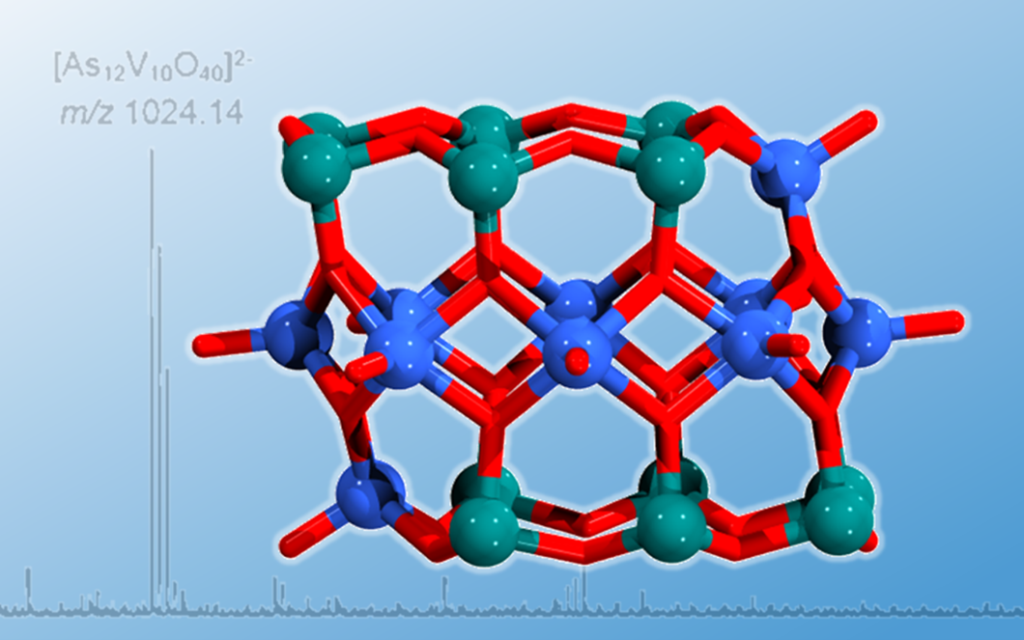
In computational mass spectrometry, linking a mass spectrometry signal to a chemically sound structure is often challenging, particularly for inorganic and nanomolecular systems. This is because compounds with coordination bonds have multiple modes of connectivity.
Recently, we published a study in Chemical Science that addressed this challenge in the context of complex and multinuclear inorganics made of vanadium, arsenic and oxygen atoms. These inorganic molecules belong to the family of spherical heteropolyoxovanadates (heteroPOVs), known for their catalytic activity and magnetic responsiveness. However, determining the structure of the molecules detected by mass spectrometry initially seemed impossible due to the over 40,000 possible configurations for spherical heteroPOVs.
Instead of trying to search through all possibilities exhaustively, we employed a systems thinking approach by combining empirical evidence on formed structures with the role of intramolecular strains caused by substitution configurations. This allowed us to narrow down a set of promising structures, ultimately making cost-efficient calculations and giving a basis to allocate a viable molecular model that correlates with experimental observations. The study also revealed an unexpected structural change: when spherical heteroPOVs are gradually over-substituted with arsenic, the overall structure changes to a cyclic assembly.
Composition-driven archetype dynamics in polyoxovanadates
Kondinski, M. Rasmussen, S. Mangelsen, N. Pienack, V. Simjanoski, C. Nather, D. L. Stares, C. A. Schalley, W. Bensch
Chem. Sci. 13, 6397-6412 (2022).